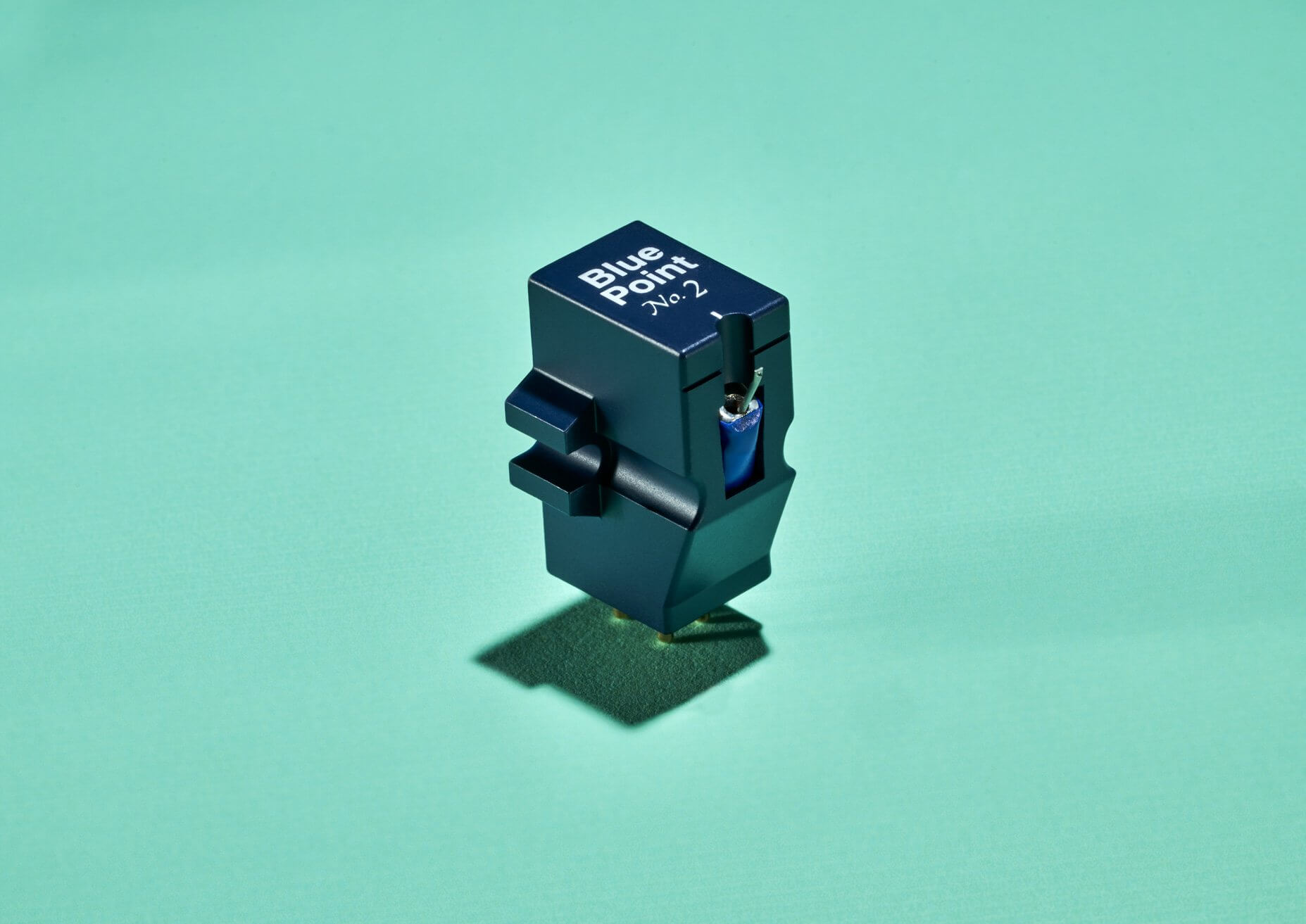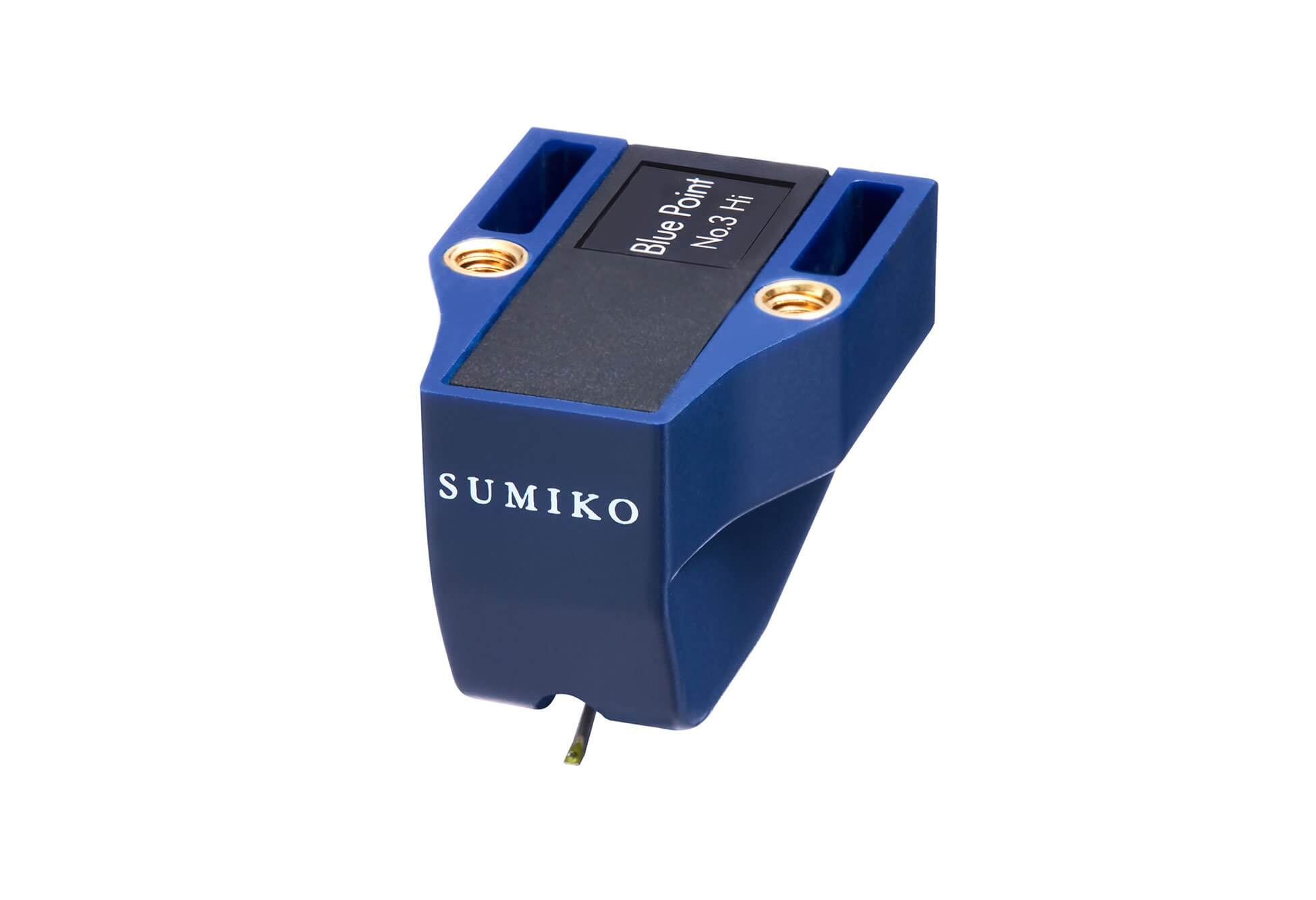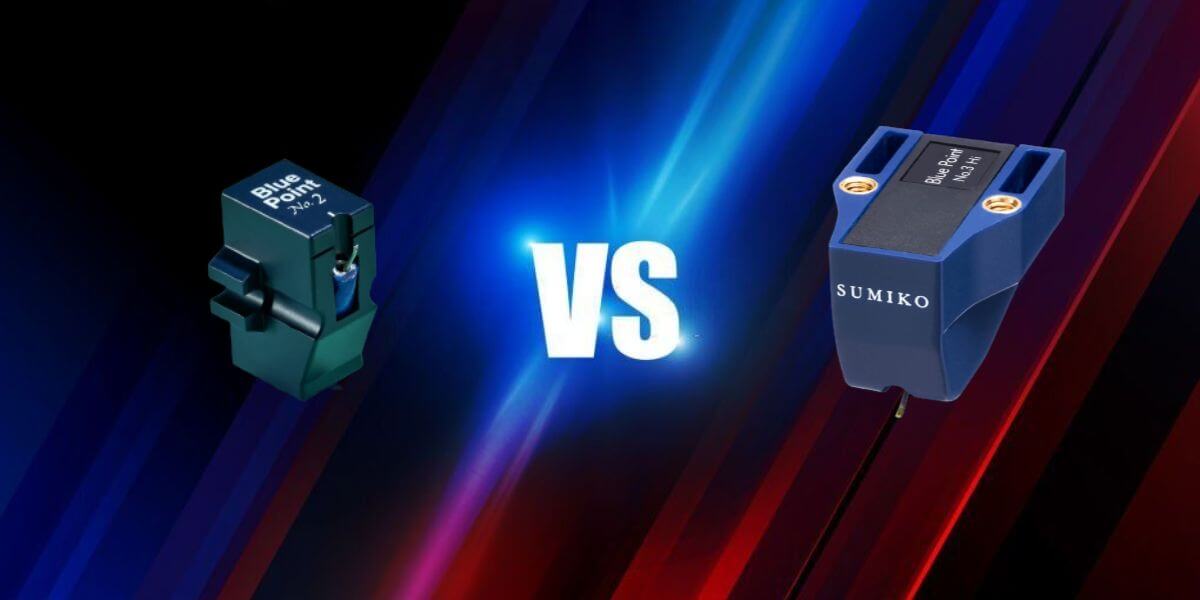Whether you’re new to the phono or turntable hobby or you’ve been around for a while, you’ve probably heard of the Sumiko Blue Point. It’s easily a cult fave because of its affordability and great sound.
After some time, its successors, the Sumiko Blue Point 2 and 3, were introduced to the market. They’re both an upgrade from the original, but which one is better?
Sumiko Blue Point 2 vs 3 is a battle between the classic and the next-gen. In this article, we looked at their similarities and differences, who’s better at what, and more importantly, which one you should get.
Sumiko Blue Point 2 vs 3 Overview
Blue Point 2 is by no means a bad cartridge. It was a strong MC choice in the market during its time.
However, at its core, Sumiko Blue Point 3 is an upgrade of Blue Point 2. The next-gen cartridge has a lower-end response frequency of 13Hz, which works wonders for the bass’s warmth and texture.
| Image | Product | Detail | Price |
|---|---|---|---|
 | Sumiko Blue Point 2 |
| Price |
 | Sumiko Blue Point 3 |
| Price |
What Is Sumiko Blue Point 2?
The Sumiko Blue Point 2 is a high-output moving coil cartridge (HOMC) with an output of 2.5 mV.
What made this cartridge so popular during its time is that you can use it on a moving-magnet (MM) phono preamp. The Blue Point 2 acts like an MM but with the distinct articulation of sound from an MC cartridge.
It promises to deliver lofty highs, strong bass sounds, and mid-range frequencies that are rich and musical. In addition, while it doesn’t offer the fullest soundstage, this cartridge shows off its ability to make instrumentals sound natural.
What Is Sumiko Blue Point 3?
Similar to its sibling, the Sumiko Blue Point 3 is also a moving coil cartridge. The difference is that this cartridge is a re-evaluation of the Blue Point 2. In other words, the Blue Point 3 was essentially made to replace its predecessor.
Sumiko refined the resonance properties by using a different housing for the cartridge. They took the level of detail the Blue Point 2 offered and elevated it to create a whole other soundstage experience.
Unlike the high-output Blue Point 2, the Sumiko Blue Point 3 has two variants: a high output and a low output.
How Is Sumiko Blue Point 2 and 3 Different?
What are the distinctions between the Sumiko Blue Point 2 and 3?
Below is a table that summarizes some of the significant differences between the two cartridges.
| Specifications | Sumiko Blue Point 2 | Sumiko Blue Point 3 |
| Mass | 0.22oz | 0.21oz |
| Dimensions | 0.66 x 0.66 x 1.09in | 0.68 x 0.67 x 0.94in |
| Frequency Response | 15Hz to 35kHz | 13Hz to 35kHz |
Appearance
Specs aside, their exterior appearance is the first noticeable difference between the Sumiko Blue Point 2 and 3.
Mass and Dimensions
While there’s only a minuscule difference in their overall mass, the Blue Point 3 and 2’s dimensions are pretty distinct from one another.
This Is Mainly Due To Changes In Blue Point 3’S Cartridge Housing. Sumiko Made Adjustments To Refine Resonance Properties Between The Tonearm And The Cartridge Itself.
You’ll notice that the Blue Point 3 is wider, but the depth is slightly smaller.
Frequency Response
There’s a modest difference between the lower-end of the frequency responses of Blue Point 2 and 3, but it’s not a negligible difference by all means. Blue Point 3 has a better lower-end range at 13Hz.
Essentially, this means that the Blue Point 3 allows more bass details to come through. The bass will likely sound richer and fuller, without sacrificing the sounds of the mids and highs.
How Is Sumiko Blue Point 2 and 3 Similar?
Interestingly, if you base it purely on the specs, it looks as if these two cartridges have more similarities than differences.
Similar Specs
Aside from the differences we discussed above, most of the two cartridges’ specifications remain the same—which makes sense because, hey, don’t fix what’s not broken, right?
Below is a table summarizing their similarities in terms of build.
| Specifications | Sumiko Blue Point 2 and 3 |
| Stylus | 0.3 x 0.17mil Elliptical |
| Internal Impedance | 135Ω |
| Load Impedance | 47kΩ |
| Output Voltage | 2.5mV @ 1kHz |
| Channel Separation | 30dB @ 1kHz |
| Channel Balance | <1dB @ 1kHz |
| Capacitance | 100pF to 200pF |
| Tracking Angle | 20° |
| Recommended Tracking Force | 2.0g |
In terms of general build material, the two cartridges both sport an aluminum cantilever and coils made of high-purity copper. Sumiko has been in business for over 40 years, so you can expect quality cartridges at every price point. Blue Point 2 and 3 are no exception.
Stylus and Mechanism
Because the two cartridges belong to the same line, their mechanism is pretty much the same. They’re both moving coil cartridges— and as the name suggests, this cartridge works by allowing the coils to move so it can produce sound.
Both cartridges also have an elliptical stylus of the same size. As the needle or tip of your stylus follows the groove modulations of your records, the elliptical shape offers less distortion and more precision.
In addition, this stylus form helps the cartridge make the most of its frequency response specifications.
Related: The Best Sumiko Cartridges on The Market
What’s Better About Sumiko Blue Point 2?
So, what does the Sumiko Blue Point 2 do better than its successor? Below are some reasons why this cartridge might be a better choice.
Affordability
Because both Blue Point 2 and 3 are MC cartridges, you can expect them to be a bit pricier than MM cartridges. The overall sound quality of an MC cartridge is often superior to MM cartridges.
If we’re talking about affordability, the Sumiko Blue Point 2 takes the bag. However, note that this cartridge can be pretty difficult to find since it’s already out of production.
Its availability may affect its current selling price even if the listed market value of this cartridge is slightly lower than its successor.
With that said, this cartridge isn’t exactly obsolete. Since it was so popular during its time, there are still a lot of people who have them, and you’ll likely find them secondhand.
Tested By Time
The Blue Point 2 has been around for longer than the Blue Point 3—which was released in 2021. This means that even though the Blue Point 2 has been discontinued, it’s been loved by many!
During our research, we’ve found more personal reviews, tips, and tricks about Blue Point 2 than its successor. For example, some people talk about how this cartridge needs to be broken in for around 20 hours before you can reach its fullest potential.
We couldn’t find anything about breaking in a Blue Point 3, much less any tips and tricks on maximizing the full potential of its sound.

What’s Better About Sumiko Blue Point 3?
Just because the Blue Point 3 is the newer cartridge, does that mean it’s the one you should automatically choose? What exactly does it do better than its predecessor?
Sound Quality
In terms of sound quality, the frequency response range of Blue Point 3 gives it an edge over Blue Point 2. The changes in the casing and the resonance are subtle, but they make the Blue Point 3’s sound richer and clearer.
Another reason why this cartridge wins with sound quality is is because you have two variants to choose from. A low-output variant lets those who have MC phono stages experience the same listening experience a high-output variant offers MM phono preamps.
Ultimately, this doesn’t mean that Blue Point 2 doesn’t have good overall sound quality. Blue Point 3 simply offers a better, more refined sound.
Accessibility
Being the more modern sibling—and having two variations—makes the Sumiko Blue Point 3 more accessible than its predecessor. It’s generally easier to find and there’s a high chance that most places that sell cartridges will have it.
It’s the complete opposite for Blue Point 2. This cartridge is even listed as “Out of Production” on Sumiko’s website itself.
This cartridge has been discontinued for a while, mainly because its successor took its place on the shelves. If you ever decide to get one, it might take a while before you get your hands on a Blue Point 2.
Related: Sumiko Blue Point 2 Vs Ortofon 2M Bronze
Who Should Get Sumiko Blue Point 2 (And Why)?
Provided that you don’t mind the difference in frequency response, Blue Point 2 is still a viable option. This is especially true if you’re on a tighter budget but still want to give MC cartridges a try.
In case you want a cartridge that’s been tried and tested for its overall quality, by all means, go for Blue Point 2.
Who Should Get Sumiko Blue Point 3 (And Why)?
Frankly, it’s easier to recommend Blue Point 3 to people simply because of its edge over Blue Point 2 in terms of sound quality. If you have the resources to opt for the Blue Point 3, we say go for it.
You’re already splurging on an MC cartridge, might as well get an excellent one.

